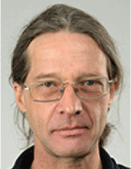Late Permian–Early Triassic depositional history in the southern Bonaparte Basin: new biostratigraphic insights into reservoir heterogeneity
R. Owens A B , A. Kelman A , K. Khider A , T. Bernecker A and B. Bradshaw AA Geoscience Australia, Canberra, Australia.
B Corresponding author. Email: ryan.owens@ga.gov.au
The APPEA Journal 61(2) 699-706 https://doi.org/10.1071/AJ20111
Accepted: 10 March 2021 Published: 2 July 2021
Abstract
The upper Permian to Lower Triassic sedimentary succession in the southern Bonaparte Basin represents a marginal marine depositional system that hosts several gas accumulations. Of these, the Blacktip gas field has been in production since 2009, while additional gas resources are under consideration for development. The sedimentary succession extends across the Permian–Triassic stratigraphic boundary, and shows a change in lithofacies from the carbonate dominated Dombey Formation to the siliciclastic dominated Tern and Penguin formations. The timing, duration, distribution and depositional environments of these formations in the Petrel Sub-basin and Londonderry High is the focus of this study. The sedimentary succession extending from the Dombey to the Penguin formations is interpreted to represent marginal marine facies which accumulated during a long-lasting marine transgression that extended over previous coastal and alluvial plain sediments of the Cape Hay Formation. The overlying Mairmull Formation represents the transition to fully marine deposition in the Early Triassic. Regional scale well correlations and an assessment of biostratigraphic data indicate that marginal marine depositional systems were initiated outboard before the end-Permian extinction event, and migrated inboard at about the Permian–Triassic stratigraphic boundary. Marginal marine deposition across the southern Bonaparte Basin continued through the faunal and floral recovery phase as Triassic species became established. The depositional history of the basin is translated to a chronostratigraphic framework which has implications for predicting the character and distribution of petroleum system elements in the Petrel Sub-basin and Londonderry High.
Keywords: Bonaparte Basin, Petrel Sub-basin, Permian-Triassic boundary, North West Shelf, reservoir, stratigraphy, biostratigraphy.

Ryan Owens is a Geoscientist in Geoscience Australia’s Minerals, Energy and Groundwater Division, Advice, Investment Attraction and Analysis Branch. He graduated from the Australian National University in 2007 with a BSc in Geology (Hons). Subsequently he worked in mineral exploration before undertaking a PhD in paleoceanography at the Research School of Earth Sciences, ANU. Since joining Geoscience Australia through the graduate program in 2014, Ryan has contributed to a number of projects including the northern Houtman sub-basin prospectivity study, the Geological and Bioregional Assessments of the Beetaloo and Cooper basins and the annual acreage release. Member: PESA, GSA. |

Andrew Kelman is a biostratigrapher in Geoscience Australia’s Minerals, Energy and Groundwater Division, Advice, Investment Attraction and Analysis Branch. He completed a BSc at ANU in 1993, and an honours degree in paleontology and ecostratigraphy at Macquarie University, NSW, in 2005. He joined Geoscience Australia as a Palaeontology Technician in 1994, moving to his present position with the Timescales project in 2006. Andrew’s work is now focused compiling biostratigraphic charts covering the Australian offshore and onshore basins and biostratigraphic contributions to the acreage release process. |

Dr Kamal Khider is a Senior Geoscientist in Geoscience Australia’s Minerals, Energy and Groundwater Division, Basin Systems Branch. He has a BSc, MSc and PhD (Stratigraphy and Sedimentology) and a PhD in Applied Geochemistry. Kamal has longstanding academic and consultative experience in geosciences, working in many academic and industrial geological organisations in Australia, the Middle East and North Africa. He worked on the regional geological appraisal of the Eocene–Oligocene–Miocene boundaries IGCP174, regional geochemical assessment of the Cobar-Girilambone region in NSW and the Queensland Carbon Dioxide Geological Storage Atlas. Since 2007, he has worked on several of Geoscience Australia’s petroleum and carbon capture and storage projects. Kamal is a member of AAPG, GSA and SEPM. |

Dr Thomas (Tom) Bernecker is a sedimentologist/petroleum geologist who holds an MSc from the University of Aachen (RWTH), Germany and a PhD from Melbourne’s La Trobe University. His research work included the development of depositional models for coal and hydrocarbon-bearing basins in NW Europe as well as facies and diagenetic studies of tectonically overprinted Devonian carbonate sequences in Australia. After a lectureship at the University of Melbourne, Tom joined the Victorian Department of Natural Resources and Energy where his work was focused on the hydrocarbon prospectivity of the Gippsland and Otway basins. Tom joined Geoscience Australia as the team leader for the onshore hydrocarbon project in 2007 and from 2009 onwards has managed the offshore acreage release program, including the promotion of investment opportunities in Australia’s oil and gas sector. Tom is currently the Director of the Energy Resources Advice and Promotion section in GA’s Minerals, Energy and Groundwater division. He is a member of PESA, SEPM and SEAPEX. |

Dr Barry Bradshaw is a Geoscientist with 29 years’ experience undertaking geological and geophysical studies and play-based prospectivity studies for conventional and unconventional hydrocarbon resources, geological storage projects and sediment-hosted mineral deposits. Barry is currently the Energy Resources Advice activity leader at Geoscience Australia, and has previously worked as a Principal Geologist at CGSS consultants, Senior Research Scientist at AGSO/Geoscience Australia and Research Scientist at Texas A&M University (USA). Barry graduated from the University of Sydney in 1988, and completed a PhD in Earth Sciences at the University of Waikato (New Zealand) in 1991. |
References
Bann, K. L., Lang, S. C., Kloss, O., Wood, G., and Benson, J. (2004). Palaeoenvironments and depositional history of the Tern Field, Bonaparte Basin. In ‘Proceedings of the Timor Sea Symposium, 19–20 June 2003’. (Eds G. K. Ellis, P. W. Baillie and T. J. Munson.) pp. 521–536. (Darwin, Northern Territory.)Bhatia, M. R., Thomas, M., and Boirie, J. M. (1984). Depositional framework and diagenesis of the Late Permian gas reservoirs of the Bonaparte Basin. The APPEA Journal 24, 299–313.
| Depositional framework and diagenesis of the Late Permian gas reservoirs of the Bonaparte Basin.Crossref | GoogleScholarGoogle Scholar |
Earl, K. L. (2004). Bonaparte Basin petroleum systems. Geoscience Australia, Canberra. Available at http://pid.geoscience.gov.au/dataset/ga/61365
Fielding, C. R., Frank, T. D., McLoughlin, S., Vajda, V., Mays, C., Tevyaw, A. P., Winguth, A., Winguth, C., Nicoll, R. S., Bocking, M., and Crowley, J. L. (2019). Age and pattern of the southern high-latitude continental end-Permian extinction constrained by multiproxy analysis. Nature Communications 10, 385.
| Age and pattern of the southern high-latitude continental end-Permian extinction constrained by multiproxy analysis.Crossref | GoogleScholarGoogle Scholar |
Foster, C. B. (1982). Spore-pollen assemblages of the Bowen Basin, Queensland (Australia): their relationship to the Permian/Triassic boundary. Review of Palaeobotany and Palynology 36, 165–183.
| Spore-pollen assemblages of the Bowen Basin, Queensland (Australia): their relationship to the Permian/Triassic boundary.Crossref | GoogleScholarGoogle Scholar |
Gorter, J. D. (1998). Revised upper Permian stratigraphy of the Bonaparte Basin. In ‘Proceedings of Petroleum Exploration Society of Australia Symposium’. (Eds P. R. Purcell and R. R.) pp. 213–228. (The Sedimentary Basins of Western Australia 2: Perth, WA.)
Gorter, J., Nicoll, R. S., Metcalfe, I., Willink, R., and Ferdinando, D. (2009). The Permian–Triassic boundary in Western Australia: evidence from the Bonaparte and Northern Perth Basins—exploration implications. The APPEA Journal 49, 311–336.
| The Permian–Triassic boundary in Western Australia: evidence from the Bonaparte and Northern Perth Basins—exploration implications.Crossref | GoogleScholarGoogle Scholar |
Helby, R., Morgan, R., and Partridge, A. D. (1987). A palynological zonation of the Australian Mesozoic. Association of Australasian Palaeontologists Memoirs 4, 1–94.
Kloss, O., Wood, G., Bensom, J., Lang, S. C., Bann, K. L., and Kassan, J. (2004). A revised depositional model for the Cape Hay Formation, Petrel Field, northern Australia. In ‘Proceedings of the Timor Sea Symposium, 19–20 June 2003’. (Eds G. K. Ellis, P. W. Baillie and T. J. Munson.) pp. 295–313. (Darwin, Northern Territory.)
Laurie, J. R., Bodorkos, S., Nicoll, R. S., Crowley, J. L., Mantle, D. J., Mory, A. J., Wood, G. R., Backhouse, J., Holmes, E. K., Smith, T. E., and Champion, D. C. (2016). Calibrating the middle and Late Permian palynostratigraphy of Australia to the geologic time-scale via U–Pb zircon CA-ID-TIMS dating. Australian Journal of Earth Sciences 63, 701–730.
| Calibrating the middle and Late Permian palynostratigraphy of Australia to the geologic time-scale via U–Pb zircon CA-ID-TIMS dating.Crossref | GoogleScholarGoogle Scholar |
Mantle, D. J., Kelman, A. P., Nicoll, R. S., and Laurie, J. R. (2010). Australian biozonation chart 2010. Part 1: Australian and selected international biozonation schemes tied to the GTS 2004 geological timescale: Canberra, Geoscience Australia.
Mays, C., Vajda, V., Frank, T. D., Fielding, C. R., Nicoll, R. S., Tevyaw, A. P., and McLoughlin, S. (2019). Refined Permian–Triassic floristic timeline reveals early collapse and delayed recovery of South polar terrestrial ecosystems. GSA Bulletin 132, 1489–1513.
| Refined Permian–Triassic floristic timeline reveals early collapse and delayed recovery of South polar terrestrial ecosystems.Crossref | GoogleScholarGoogle Scholar |
Mory, A. J. (1991). Geology of the offshore Bonaparte Basin northwestern Australia. Geological Survey of Western Australia, Report 29, p. 47.
Norvick, M. S. (2003). New Palaeogeographic maps of the northern margins of the Australian plate - Updated report. Geoscience Australia, Canberra. Available at http://pid.geoscience.gov.au/dataset/ga/82539
Price, P. L. (1997). Permian to Jurassic palynostratigraphic nomenclature of the Bowen and Surat basins. In ‘The Surat and Bowen Basins’. (Ed. P. M. Green.) pp. 137–178. (Southeast Queensland: Brisbane, Australia, Queensland Department of Mines and Energy.)
Robinson, P. H., and McInerney, K. B. (2004). Permo-Triassic reservoir fairways of the Petrel sub-basin, Timor. In ‘Proceedings of the Timor Sea Symposium, 19–20 June 2003’. (Eds G. K. Ellis, P. W. Baillie, and T. J. Munson.) pp. 295–312. (Darwin, Northern Territory.)
Ryan, D. A., Heap, A. D., Radke, L., and Heggie, D. T. (2003). Conceptual models of Australia’s estuaries and coastal waterways: applications for coastal resource management. Geoscience Australia, Record 2003/09, p. 136.
Saïag, J., Brigaud, B., Portier, É., Desaubliaux, G., Bucherie, A., Miska, S., and Pagel, M. (2016). Sedimentological control on the diagenesis and reservoir quality of tidal sandstones of the upper Cape Hay Formation (Permian, Bonaparte Basin, Australia). Marine and Petroleum Geology 77, 597–624.
| Sedimentological control on the diagenesis and reservoir quality of tidal sandstones of the upper Cape Hay Formation (Permian, Bonaparte Basin, Australia).Crossref | GoogleScholarGoogle Scholar |
Smith, T., Bernecker, T., Bodorkos, S., Gorter, J., Hall, L., Hill, T., Holmes, E., Kelman, A., Khider, K., Laurie, J., Lech, M., McKellar, J., Mory, A., Nicoll, R., Owens, R., Palu, T., Phillips, L., Stephenson, M., Wood, G. (2017). The impact of recalibrating palynological zones to the chronometric timescale: revised stratigraphic relationships in Australian Permian and Triassic hydrocarbon-bearing basins. In ‘AAPG|SEG 2017 International Conference & Exhibition’. (London.)
Wooldridge, L. J., Worden, R. H., Griffiths, J., and Utley, J. E. P. (2019). Clay-coat diversity in marginal marine sediments. Sedimentology 66, 1118–1138.
| Clay-coat diversity in marginal marine sediments.Crossref | GoogleScholarGoogle Scholar |
Worden, R. H., and Morad, S. (2000). Quartz cementation in oil field sandstones: a review of the key controversies. In ‘Quartz Cementation in Sandstones’. pp. 1–20.


